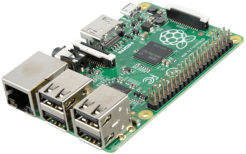
The Future of Hotel Rooms

Our architecture is local-server based at each property, with a small single board Raspberry Pi computer configured as a
controller for each room. The controller regulates a series of actuators placed throughout the room. These actuators are
configured for both circular and linear mechanisms and are secure-wirelessly connected to the Raspberry controller.
We enhance that base technology with an Arduino Uno SMD R3 to sense and control objects in the room. The Raspberry Pi
receives wireless commands, then communicates with an Arduino serially to change color, pattern, etc. (Arduinos are better at
clocking the signals (such as required by a multi-color LED strip, for example.)
All UI (user interface) control screens on tablets and smartphones are server-delivered intra-net webpages. This gives the
screens a user-familiar look and “under-the-hood” functionality common to web-site delivery to the device. The UI itself is
swipe-touch-drag-refresh and therefore intuitive for any user of a smartphone, tablet, or touch-screen personal computer.
The system wirelessly identifies the unique IMEI or MEID of a guest’s cell phone (even dormant ones) and instantly adjusts the
room to the pre-selected preferences of that particular customer.
Our interoperability with multiple systems is rooted in the direct code reconciliation routines initially developed by our co-
founder for interaction between major slot machine manufacturers’ systems and player tracking systems for casino.
Rather than the massive-data processing power (and cloud data storage) required for AI systems (or hybrid pseudo-AI systems),
our entire technology is an on-property install of a small-processing server, the wireless system, the Raspberry minis, and the
actuators.
The data storage is pulled from existing on-site data warehousing from the various systems already installed at the properties
(which frees SmartRooms© from having to maintain its own data warehouse (other than temporary configuration files); our
system simply passes message files to populate the web interfaces of data and stores the data in the original customer data
system.
This architecture allows for a simple installation with the most minor maintenance required. The complex
specialization of our system is the interface code itself combined with the actuator functionality.
The Technology

©2017 Gary Green Gaming Inc.

5
Often used for robotics, the Raspberry Pi 3 uses a Broadcom BCM2837 SoC with a 1.2 GHz 64-bit quad-core ARM Cortex-
A53 processor, with 512 KB shared L2 cache.
6
Recognizing the vulnerability of WEP, our wireless encryption is based on the IEEE 802.11i standard with our own
proprietary security protocols added to the Cisco LEAP protocol.

dolor sit amet

Our architecture is local-server
based at each property, with a
small single board Raspberry Pi
computer configured as a
controller for each room. The
controller regulates a series of
actuators placed throughout the room. These
actuators are configured for both circular and
linear mechanisms and are secure-wirelessly
connected to the Raspberry controller.
We enhance that base technology with an
Arduino Uno SMD R3 to sense and control objects
in the room. The Raspberry Pi receives wireless
commands, then communicates with an Arduino
serially to change color, pattern, etc. (Arduinos
are better at clocking the signals (such as
required by a multi-color LED strip, for example.)
All UI (user interface) control screens on tablets
and smartphones are server-delivered intra-net
webpages. This gives the screens a user-familiar
look and “under-the-hood” functionality common
to web-site delivery to the device. The UI itself is
swipe-touch-drag-refresh and therefore intuitive
for any user of a smartphone, tablet, or touch-
screen personal computer.
The system wirelessly identifies the unique IMEI
or MEID of a guest’s cell phone (even dormant
ones) and instantly adjusts the room to the pre-
selected preferences of that particular customer.
Our interoperability with multiple systems is
rooted in the direct code reconciliation routines
initially developed by our co-founder for
interaction between major slot machine
manufacturers’ systems and player tracking
systems for casino.
Rather than the massive-data processing power
(and cloud data storage) required for AI systems
(or hybrid pseudo-AI systems), our entire
technology is an on-property install of a small-
processing server, the wireless system, the
Raspberry minis, and the actuators.
The data storage is pulled from existing on-site
data warehousing from the various systems
already installed at the properties (which frees
SmartRooms© from having to maintain its own
data warehouse (other than temporary
configuration files); our system simply passes
message files to populate the web interfaces of
data and stores the data in the original customer
data system.
This architecture allows for a simple installation
with the most minor maintenance required. The
complex specialization of our system is the
interface code itself combined with the actuator
functionality.
The Technology
adipisicing officia eiusmod ipsum
+44 (0)1234 000000




















